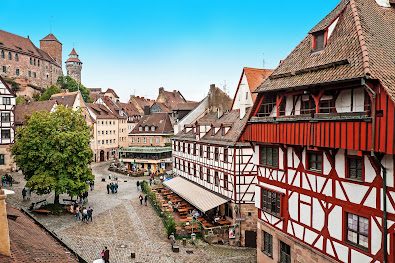Since there are too many amazing destinations to visit just in Europe, here are Stephanie Camello's top 10!!
__________________________________________________
1) Jerusalem, Israel - the Holy City for Jewish, Christian and Muslim peoples alike.
2) Rome, Italy - home to the Vatican, historic sites like the Trevi Fountain and Colosseum and birthplace of the Roman Empire.
3) Munich, Germany - home to Oktoberfest, traditional Christmas markets, Baroque and Renaissance style cathedrals and not far from the famous Neuschwanstein castle.
4) Vienna, Austria - located on the beautiful Danube River, its culture was shaped by Mozart, Beethoven and Freud and is known for its Imperial palaces, plentiful beer gardens, monasteries, the Vienna Boys Choir and several historic and elegant Catholic Cathedrals.
5) Warsaw, Poland - "It is a phoenix that has risen repeatedly from the ashes of war" (Britannica). Known in our time for being captured by German troops at the start of WW2, it was also the location of Auschwitz, the deadliest concentration camp of WW2. Despite its setbacks of the past, Poland is a rebuilt, thriving, Catholic city that brought the world St. Pope John Paul II, Frederick Chopin, Marie Curie, Polish folk dolls, tasty beer and kielbasa, along with numerous ancient castles as well as stately modern architecture.
6) Barcelona, Spain - "Barcelona is known for its exceptional soccer and the brilliant architecture of Antoni Gaudi. It's also famous for its modern art museums, serene parks, golden shoreline, and tasty tapas" (heyexplorer.com).
7) Geneva, Switzerland - "Geneva is a global city, a financial center, and a worldwide center for diplomacy due to the presence of numerous international organizations, including the headquarters of many agencies of the United Nations and the Red Cross. Geneva hosts the highest number of international organizations in the world" (Wikipedia). It's also about an hour away from Montreaux where the famous Freddie Mercury statue is located.
8) Nuremberg, Germany - famous for its historical landmarks like the imperial castle, it also served as a prime commercial hub in the Middle Ages. Germany's most famous Renaissance artist Albrecht Durer was from Nuremberg and it was his work that influenced the rest of Europe during the artistic period. Additionally, more recently, it was the site of the historic Nuremberg Trials that took place shortly after WW2 which found several German soldiers guilty of crimes against humanity.
9) Normandy, France - Normandy is most famous for the WW2 "storming of the beaches at Normandy" by U.S. troops. In addition, Normandy is a lovely suburb just north of Paris that is known for producing excellent cheeses, apple cider, delectable pastries and quality seafood like herring and scallops.
10) Dublin, Ireland - birthplace of Bono, Oscar Wilde, and the Gleeson actors, Dublin is truly known for the friendliness of its people and contains historic landmarks like the Dublin Castle and was birthplace of Sir Benjamin Guinness, mayor of Dublin and brewer of one of the most famous and beers in the world!
Whatever is on your own list of awesome places to go, you're sure to find loads of history and fun facts that will inspire and amaze you!












Woohoooo my favorite ever is Jerusalem (no surprise) but have a special place in my heart for Bethlehem. I haven't been to Dublin, Normandy, Nuremberg and Geneva but I want to go to Warsaw or Poland the most from this list.
ReplyDeleteYeah, Jerusalem has it all! Actually I've only been to Rom and Jerusalem myself, so I'm looking forward to seeing all these places starting with Germany and Austria!
ReplyDelete